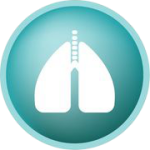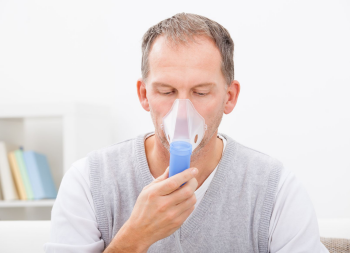|
|
|
|
Pulmonary Disease, Asthma, Chronic Lung Disease, Primary Care
|
 Chronic Obstructive Pulmonary Disease (COPD) is a serious, progressive lung disease that can make it difficult to breathe and get enough oxygen into the body. It can make simple activities like walking up the stairs or running daily errands challenging. Chronic Obstructive Pulmonary Disease (COPD) is a serious, progressive lung disease that can make it difficult to breathe and get enough oxygen into the body. It can make simple activities like walking up the stairs or running daily errands challenging.
Although there is no cure, it is possible for you to live well with COPD.
|
 Pulmonary Medicine Pulmonary Medicine
Pulmonary disorders that Clear Creek Medical Group can help you with are:
- Pulmonary Artery Disease
- Pulmonary Vascular Disease
- Pulmonary Hypertension
- Chronic Obstructive Pulmonary Disease (COPD)
- Asthma
|
|
 Asthma Asthma
Asthma is a chronic lung disease that causes wheezing, breathlessness, chest tightness and coughing. It can affect adults or children. According to the Centers for Disease Control and Prevention, approximately 1 in 12 adults and 1 in 11 children have asthma.
Air enters your body through your nose and mouth. When you breathe air in, it moves down to your lungs through a breathing tube called the trachea. Air moves through your lungs via many branching tubes called airways. In most healthy people, these airways are wide open, so air can flow unobstructed. In people with asthma, the airways are often swollen and irritated.
An “asthma attack” occurs when things that don’t bother most people—so-called “triggers” such as cold, mold, exercise, or pet dander–enter and irritate the airways, which produce extra mucus and swell even more in an attempt to keep the trigger out. The result is swollen airways filled with mucus. Imagine someone squeezing down on a garden hose half-filled with gunk. Just as it would be hard for water to flow through the hose, it’s hard for air to move through swollen, mucus-filled airways. And because the air can’t move freely, it’s difficult to breathe. The wheezing sound that often accompanies asthma is air trying to move through restricted airways.
While there’s no known cure for asthma, most people with asthma can control their symptoms, so they can breathe freely and live active, healthy lives.
|
|
 Shortness Of Breath Shortness Of Breath
Shortness of breath is the feeling that you’re not getting enough air. Some shortness of breath is completely normal and nothing to worry about - such as feeling short of breath after running upstairs to answer the phone. Most people feel short of breath when they exceed their usual activity level, and breathing returns to normal after a rest period.
Shortness of breath may also be a symptom of many common diseases. Most people can predict when they will become short of breath. Shortness of breath with strenuous exercise is normal, but episodes of shortness of breath with low exertion, or even at rest, may a sign of heart or lung disease. People with asthma who experience exercise-induced shortness of breath often carry inhaled medication that they can use before or during exercise to decrease their shortness of breath.
Other episodes of shortness of breath occur suddenly and for no apparent reason. This can be frightening and should always be investigated by a health-care professional. If you or someone you know suddenly becomes short of breath, stay with them and monitor their breathing. If the episode doesn't end quickly or if their breathing is getting worse instead of better, call 911.
Any unexplained instance of shortness of breath should be reported to your health-care professional. Remember, shortness of breath, especially for no obvious reason, can be a symptom of a serious disease. Shortness of breath that limits your activities or does not go away should not be ignored.
|
|
 Chronic Lung Disease Chronic Lung Disease
Chronic obstructive pulmonary disease (COPD) is one of the leading causes of death in the general population.
COPD is characterized by chronic airway obstruction, inflammation and enlargement of air spaces. Patients with COPD have abnormalities in gas exchange: oxygenation and or elimination of carbon dioxide.
Many patients with advanced COPD commonly have worsening of the gas exchange during sleep and require treatment.
|

Pulmonary Function Testing
Clear Creek Medical Group conducts Pulmonary Function Testing at our office in Denver.
There are four components to a PFT:
- Flow Volume Loop - pre and post bronchodilator
- Maximum Voluntary Ventilation (MVV) - pre and post bronchodilator
- Diffusion Lung capacity for Carbon Dioxide (DLCO)
- Lung Volume - using nitrogen wash-out, as opposed to a body box
The nitrogen wash-out lung volume test has great appeal for patients who may be prone to claustrophobia. Wheelchair and overweight patients favor our testing environment over hospital PFT body boxes.
The PFT takes approximately 45 minutes to one-hour. Our experienced, friendly respiratory therapist coaches patients through the series of breathing exercises.
|
|
|
|
|



